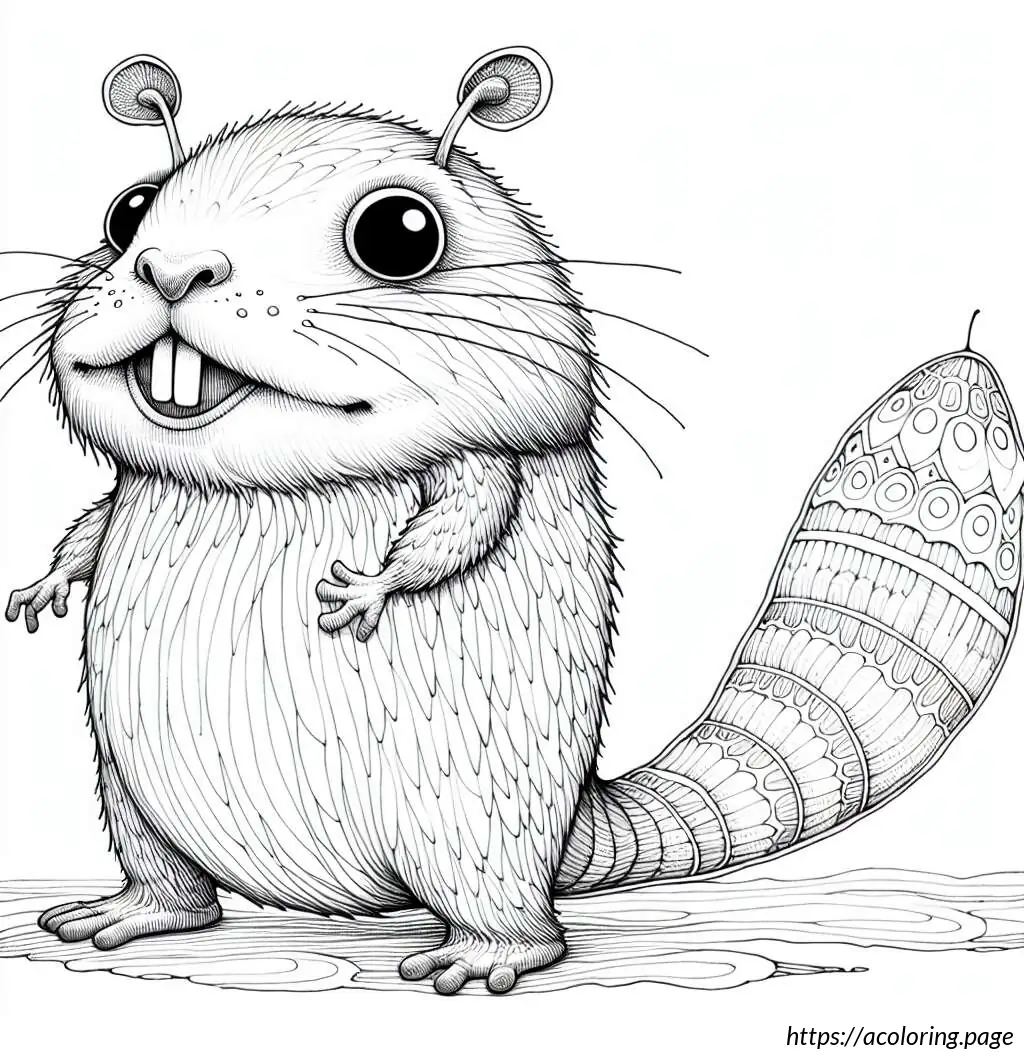

What is in this image? Describe it as if you were explaining it to someone from the 15th century.
The image depicts a fanciful creature, akin to those seen in Aesop''s Fables or a jest book, drawn entirely with black ink on a parchment of white. Imagine a plump, upright beast, roughly the size and shape of a large sack of grain, with limbs like twigs and feet small enough to fit in a child''s shoe. This creature bears the countenance of a bemused beast, with large, rounded eyes set wide apart and a significant, bulbous nose reminiscent of a squash. It has a capacious, grinning mouth exposing small, uneven teeth that might remind one of the bite of a young pup. Atop its head are two sprightly antennae, giving it an air of perpetual surprise.Upon its back, this creature carries a mighty tail, large and beaver-like in dimension, but configured more like the lozenge tiles that adorn cathedral floors, segmented and patterned. Each section of the tail resembles the crafting of a master basket-weaver.This illustration seems to breathe life into an imaginary creature from a tale of lore, one perhaps told by a traveling minstrel or a shrewd elder by the firelight, designed to instill both wonder and amusement in its audience. Such images, spawned by the whimsy of an imaginative artist, are meant to entertain and spark the fancy rather than to depict the natural world.